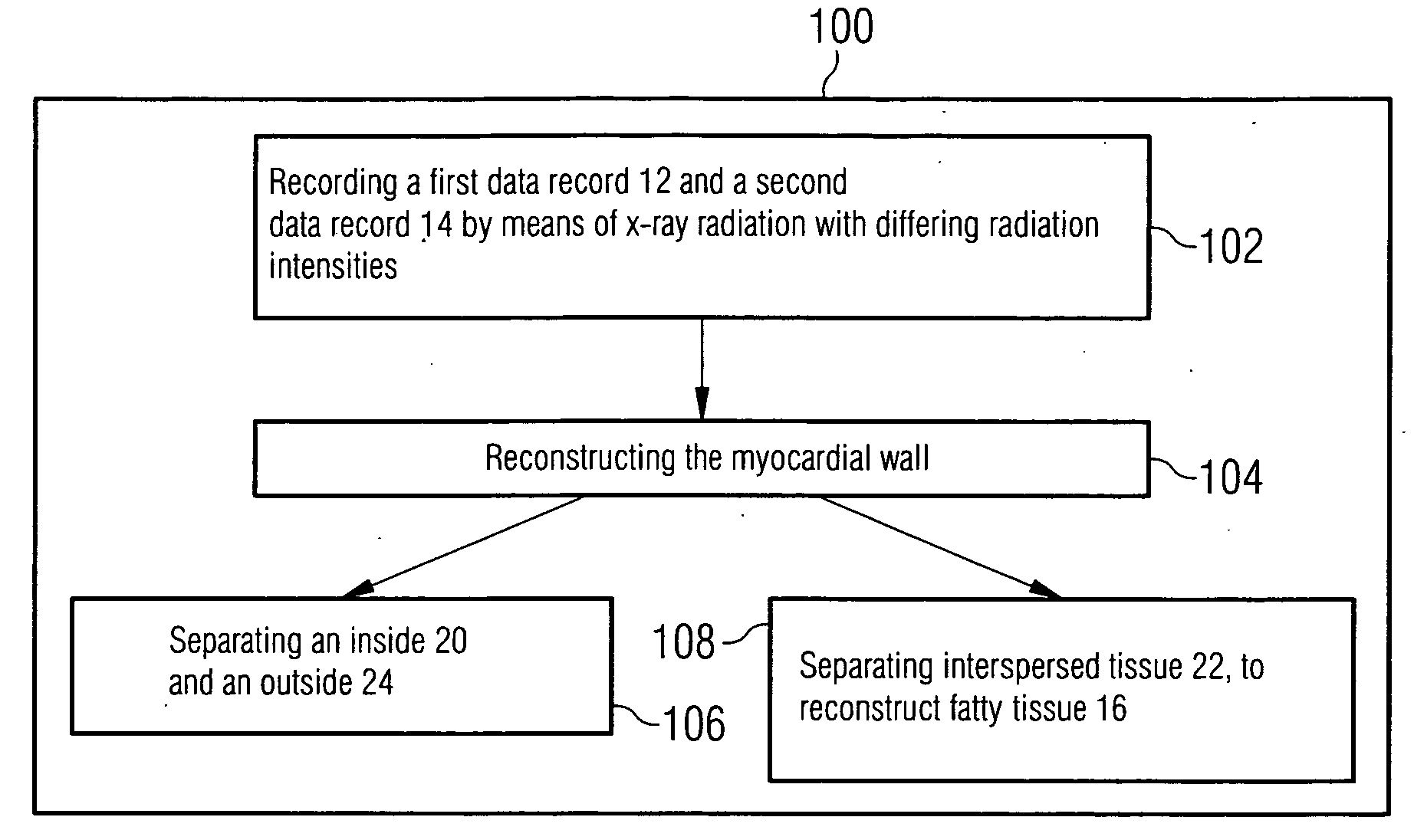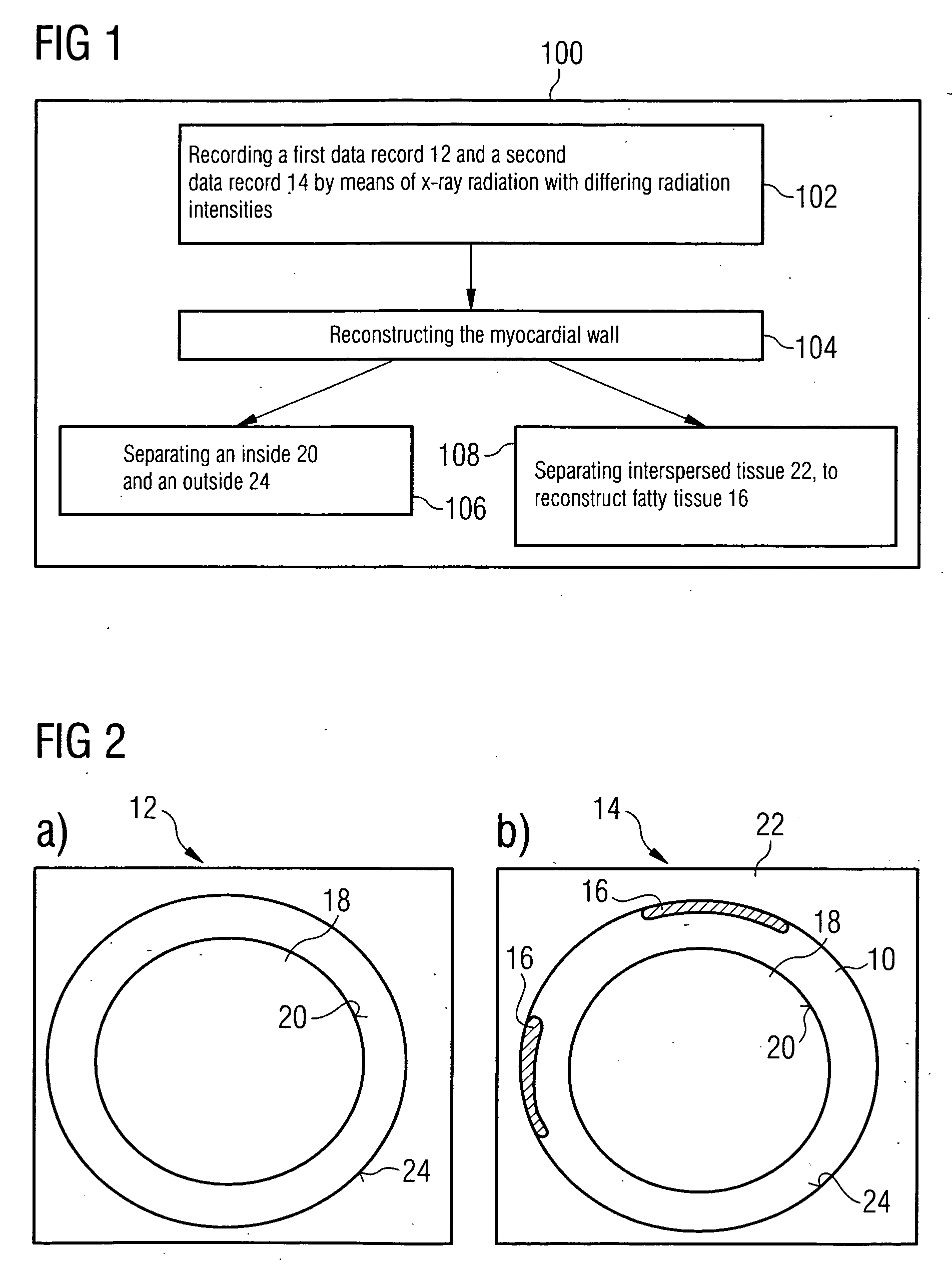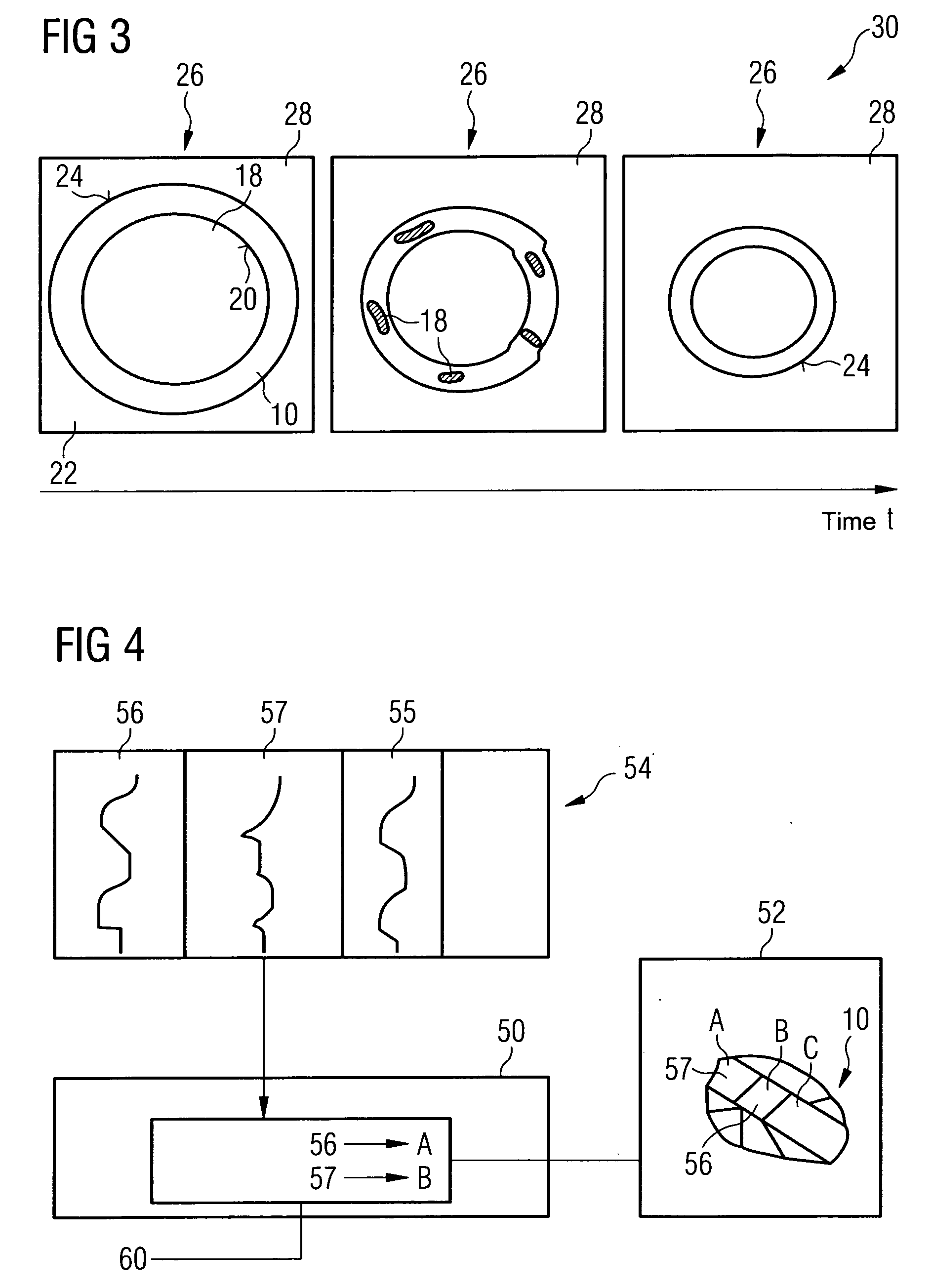Method for segmenting a myocardial wall and device for detecting a coronary artery with pathological changes
a technology of pathological changes and myocardial walls, which is applied in the field of myocardial wall segmentation and the detection of coronary arteries with pathological changes, can solve the problems of weakened arteries, negative effect of pump functions, and weakening cardiac output, and achieve the effect of better visualization of the pump function of the hear
- Summary
- Abstract
- Description
- Claims
- Application Information
AI Technical Summary
Benefits of technology
Problems solved by technology
Method used
Image
Examples
Embodiment Construction
[0032]FIG. 1 shows an inventive method 100 for segmenting a myocardial wall 10. A first data record 12, which includes the myocardial wall 10, is recorded using x-ray radiation in a first method step 102. A second data record 12 of the myocardial wall 10 is recorded in the same cardiac phase. The two data records 12, 14 are recorded by an x-ray radiation source with differing radiation intensities as a detector transilluminates a person. Recording with ECG control allows the data records 12, 14 to be recorded in the same cardiac phase. Alternatively the second data record 14 is recorded at the same time as the first data record 12 using a second x-ray radiation source and assigned detector.
[0033]The data records 12, 14 essentially capture the radiation intensity of x-ray radiation remaining after transillumination and are used in a further method step 104 to reconstruct the myocardial wall 10. A reconstruction generated from the first data record 12 is shown in FIG. 2a. The radiatio...
PUM
 Login to View More
Login to View More Abstract
Description
Claims
Application Information
 Login to View More
Login to View More - R&D
- Intellectual Property
- Life Sciences
- Materials
- Tech Scout
- Unparalleled Data Quality
- Higher Quality Content
- 60% Fewer Hallucinations
Browse by: Latest US Patents, China's latest patents, Technical Efficacy Thesaurus, Application Domain, Technology Topic, Popular Technical Reports.
© 2025 PatSnap. All rights reserved.Legal|Privacy policy|Modern Slavery Act Transparency Statement|Sitemap|About US| Contact US: help@patsnap.com



